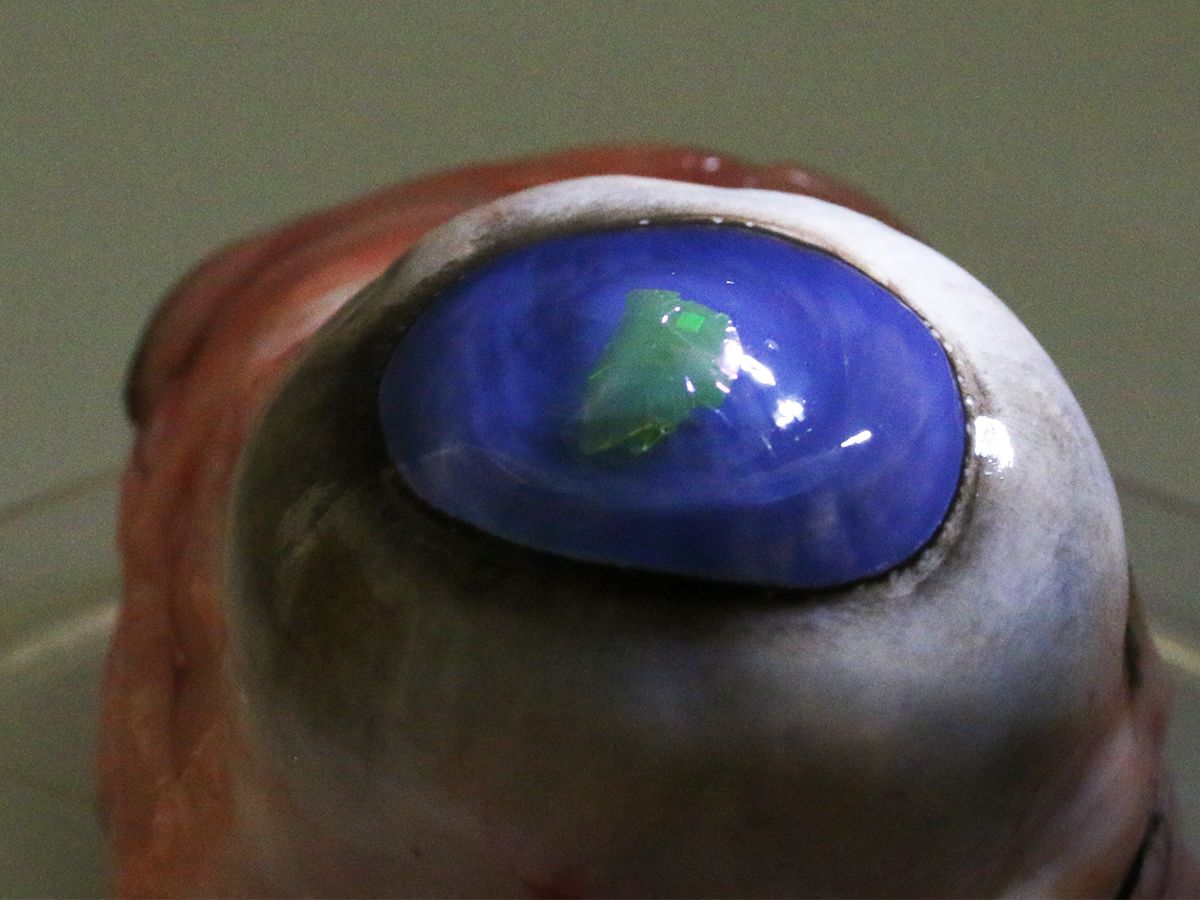Laser beams shooting out of cows’ eyes could be a step toward better biometric security, less easily forged banknotes, and improved sensors, according to a team of Scottish scientists.
Researchers at the Organic Semiconductor Center, located at the University of St. Andrews, have developed extremely thin, bendable lasers. They’ve done this by stamping gratings into a polymer that can be grown on a glass substrate, removed from the glass and applied to other surfaces, then stimulated by an external, low-power laser so that it emits a beam. To demonstrate the concept, the Scottish researchers attached one of their flexible membrane lasers to a contact lens applied to an eyeball that had been removed from a cow. The researchers describe their work in today’s issue of Nature Communications.
Lead researcher Malte Gather promises he’s not planning to build an army of cows with laser-beam eyes. His idea is that if a low-power, eye-safe laser could be applied to a contact lens, it could be used to encode a security tag that would add a second layer of authentication to an iris scan. The same could be done with fingerprint scanners; the team also attached one of its lasers to a person’s thumbnail as a demonstration.
Several such lasers with slightly different emission wavelengths could be stacked onto a banknote, providing a sort of spectral bar code to guard against counterfeiting. “It would be very difficult for someone else to make a laser that had exactly the same wavelength,” Gather says. The lasers might also make good biosensors that could be immersed in a fluid sample and change wavelengths when they come in contact with a particular substance.
The researchers started with a glass substrate and deposited a layer of PEDOT, a common polymer. They then added another layer of polymer and used a nano-imprint process to stamp a distributed feedback grating into it. On top of that, they placed a layer made from one of several organic semiconducting polymers. They used ultraviolet light to cure the grating layer, then placed the whole contraption into water. The PEDOT dissolved, leaving the rest of the structure to float to the surface, where they could easily pick it off.
The device is approximately 200 nanometers thick. When illuminated by another laser, it emits its own laser light at a wavelength between 420 and 700 nm, determined by the spacing in the grating. The emission is very low power, Gather says, on the order of a nanowatt.
Gather got the idea of laser eyes in 2011, when he made a laser based on a single living cell. Reporters asked him if this would allow the creation of comic book superheroes with heat vision, which started him thinking about the question. This work won’t turn a human into the comic book hero Cyclops of the X-Men, with his laser-beam eyes, or let Elsie the cow lay waste to Wisconsin’s dairy industry, but pondering the idea could give rise to practical applications. “Sometimes ‘fun’ leads to ‘useful,’ ” Gather says.
Neil Savage is a freelance science and technology writer based in Lowell, Mass., and a frequent contributor to IEEE Spectrum. His topics of interest include photonics, physics, computing, materials science, and semiconductors. His most recent article, “Tiny Satellites Could Distribute Quantum Keys,” describes an experiment in which cryptographic keys were distributed from satellites released from the International Space Station. He serves on the steering committee of New England Science Writers.



